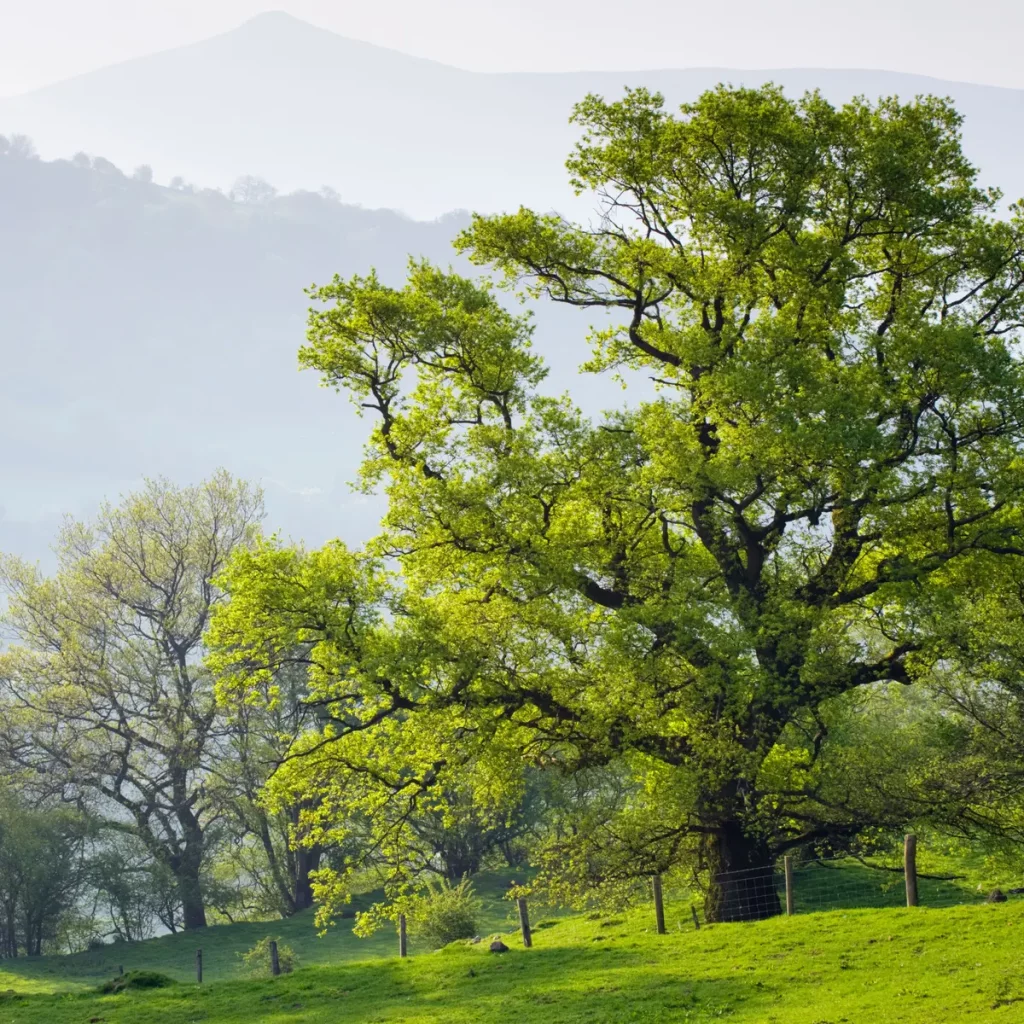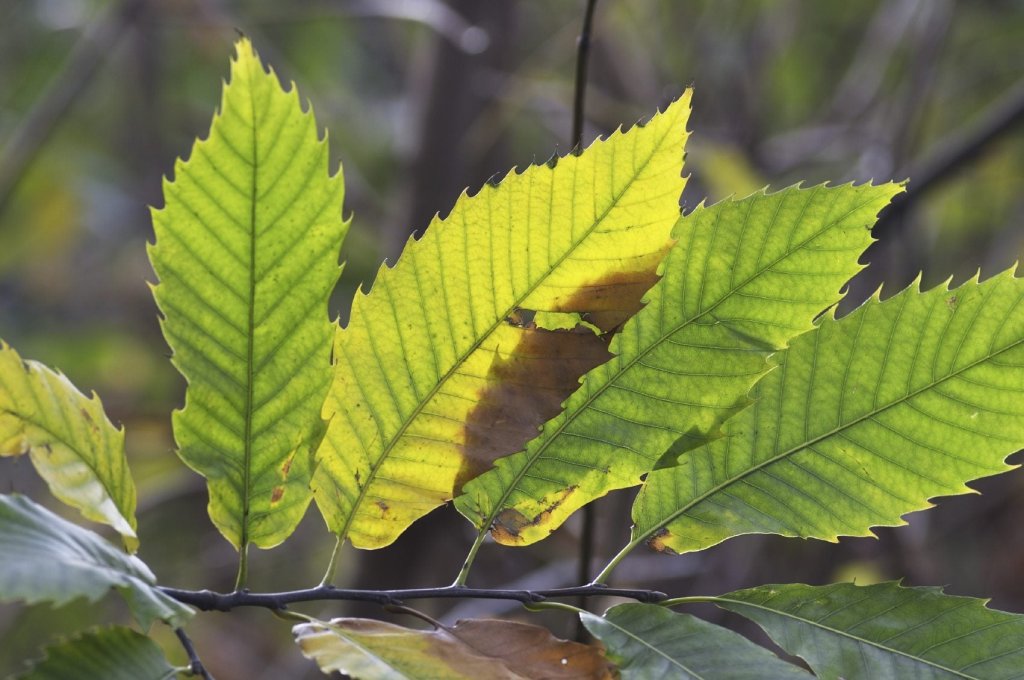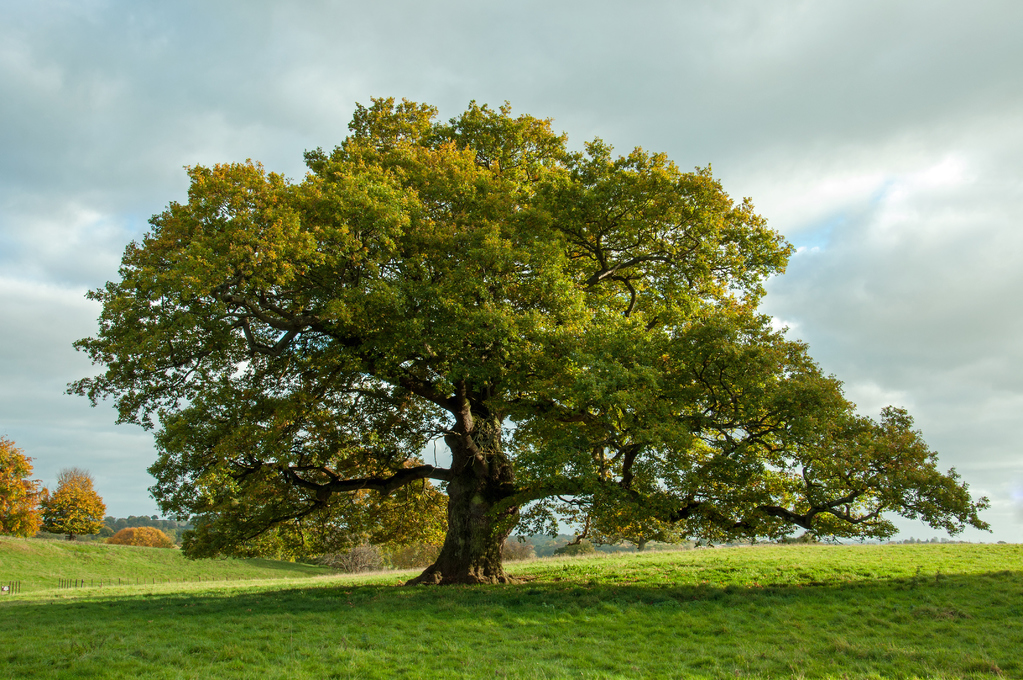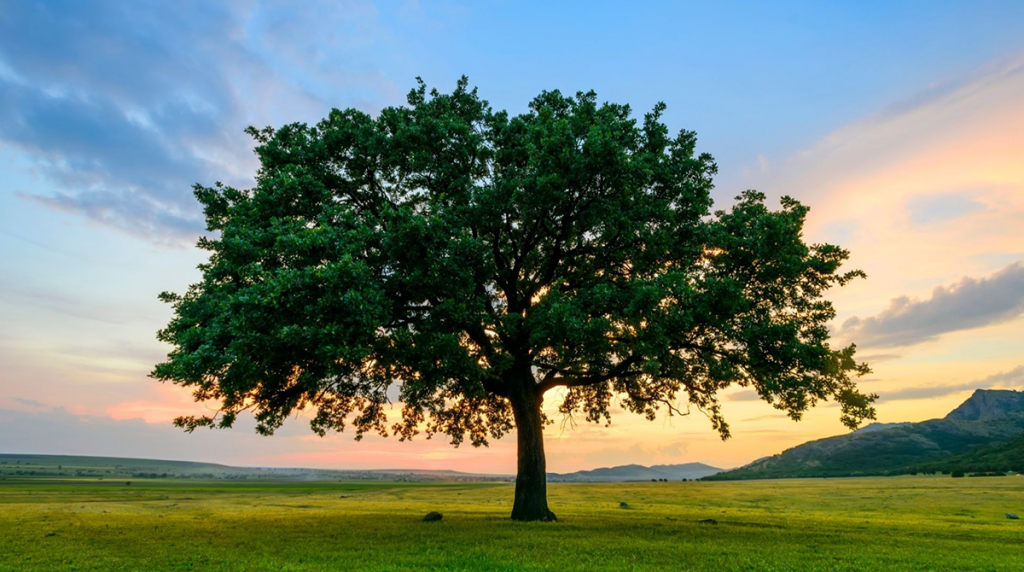Trees are all around us, and they have some simple yet fascinating characteristics that make them unique in the natural world. We will find the four main characteristics of a tree in the simplest way possible.
Firstly, a tree is a big plant that grows upright. Unlike smaller plants, trees are tall and have a strong trunk that supports their branches and leaves. This makes them stand out in a tree picture. Secondly, trees have leaves.
These leaves help trees make food through sunlight, a process called photosynthesis. You can often tell what type of tree it is by looking at the shape and color of its leaves.
Let’s find them further to the beauty and importance of trees in our world.
Characteristic 1: Growth Patterns

Annual Rings
Tree rings, also called growth rings or yearly rings, act like a tree’s diary. These circles appear as trees grow caused by changes in cell size and density during the year in places with clear seasons, like temperate areas.
The rings are more obvious but in tropical spots with steady weather. They might not be as clear. Studying tree rings is known as dendrochronology. It is not just about figuring out a tree’s age.
Dendro Climatologists look at these rings to understand past weather patterns. Wider rings often mean lots of rain and good conditions, while narrow rings can suggest droughts or cold times. This information helps us learn about past climates, which is important for predicting future climate changes.
Secondary Growth
Trees grow in a special way called secondary growth. Most plants get taller, but trees also get wider over time. This growth happens in the layer under the bark called cambium. As new cells form in the cambium, they push the old, dead cells outward, making tree rings. This keeps making trees taller and stronger every year.
Characteristic 2: Leaf Types

Simple vs Compound Leaves
Understanding tree leaf types enhances our tree identification guide with images. Simple leaves are attached directly to the branch, while compound leaves contain multiple leaflets.
This distinction is key in identifying tree species, with each leaf type adapted to its environment. Visual guides can significantly aid in recognizing these differences, making tree identification more accessible
Evergreen vs Deciduous
One more interesting thing about trees is how they handle their leaves. Trees can be grouped into two types: evergreen and deciduous. Evergreen trees keep their leaves all year round, which gives us shade and oxygen all the time. On the other hand, deciduous trees drop their leaves in certain seasons, often in the fall, as a way to survive when the environment changes.
Characteristic 3: Reproduction and Propagation

Seed Reproduction
The way trees make new trees is really interesting. Some trees, like oak trees, make small nuts called acorns that animals like squirrels eat and spread around.
Maple trees make seeds with wings that float in the air, carried by the wind to find new places to grow. In tropical forests, trees work together with animals like birds and bats to spread their seeds really far. Also, trees change how they make new trees based on where they live. Pine trees, for example, use cones to keep and let go of their seeds.
These cones can stay closed for a long time and only open when it’s just right for the seeds to grow. On the other hand, trees in deserts make only a few seeds to survive in dry places without much food.
Asexual Reproduction
While seed reproduction is common, some trees can make new ones without seeds. This is called asexual reproduction. Trees can do this through root sprouting and cloning, which creates trees that are the same genetically. Asexual reproduction can be helpful in certain environments and is necessary to keep different genes in the tree population.
Characteristic 4: Environmental Impact
Carbon Sequestration
Trees are like nature’s vacuum cleaners. They suck up carbon dioxide from the air during a process called photosynthesis and stash it away in their bodies. This helps lower the amount of greenhouse gases in the air and keeps our planet healthy.
Biodiversity Support
Forests are super important for dealing with climate change. Trees soak up carbon dioxide and give out oxygen, which helps keep the Earth’s carbon balance in check. Basically, they’re like big storage units for carbon.
Which is great for reducing greenhouse gases in the air. Forests also do lots of good things for us humans. They help control the weather, like rain, and stop soil from getting washed away.
Plus, they give jobs and stuff to many people worldwide. People get wood and other forest stuff and work from forests. But here’s the problem: the forests are in danger. People are chopping them down, illegally logging, and breaking up their homes.
Conclusion
Trees have four main characteristics that make them special and unique. Firstly, they are tall and stand upright, reaching high into the sky. This gives them a towering presence in the environment.
Secondly, trees have branches that spread out in all directions, providing shade and shelter for various creatures. This branching structure also allows them to collect sunlight for photosynthesis. Thirdly, trees have leaves that change colors with the seasons, making them a beautiful sight to behold.
Lastly, trees have deep roots that anchor them firmly in the ground, keeping them stable and strong.


